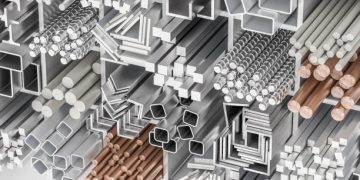Researchers at the University of Toronto, led by materials engineer Michel Haché, have developed a cost-effective electrodeposition process that can significantly enhance the properties of metal alloys. Their findings, published in the journal Surface and Coatings Technology, demonstrate that this method allows for the economical and scalable production of high-performance alloys. Electrodeposition, a process traditionally used in chrome plating, involves dissolving metal ions in water and using an electric current to form solid materials. Haché and his team applied this technique to create alloys composed of nickel, iron, cobalt, tungsten, and molybdenum. These materials demonstrated superior durability and heat resistance, withstanding temperatures up to 500 degrees Celsius—nearly double the limit for pure nickel.
The study highlights that the alloys become stronger and harder with increased complexity up to a certain point. Alloys with four different elements endured temperatures 100 degrees Celsius higher than those with only three elements. However, adding a fifth element did not yield further improvements, suggesting an optimal balance in alloy composition. According to Haché, these findings not only pave the way for more efficient production but also open the door to new applications in industries that demand extreme material performance, such as automotive and aerospace sectors. “Anywhere that we are trying to push materials to their absolute limits,” Haché noted, indicating the potential widespread impact of this research.
Your source for supply chain news updates: The Supply Chain Report. Enhance your international trade knowledge at ADAMftd.com.
#Electrodeposition #AdvancedAlloys #EngineeringInnovationNews #AutomotiveIndustryNews #ManufacturingTechnologyNews

















